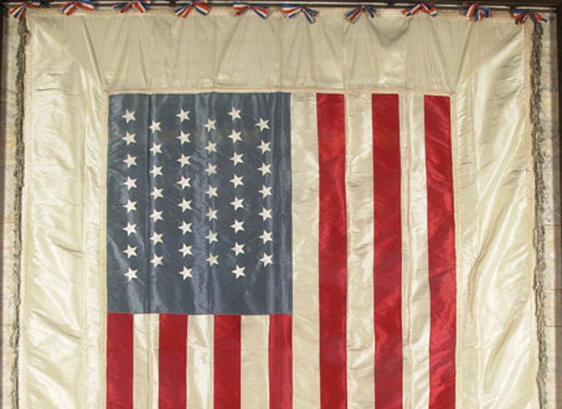Peace Flag Exhibit
Past exhibit
This item is displayed on the wall on the second floor by the Press Gallery exhibit. Representative of the hopefulness and enthusiasm that characterized many of the pre-World War I peace movements in America, the earliest peace flags date back to 1891.
In 1866, in the immediate aftermath of the American Civill War, Alfred H. Love, a Quaker pacificist, launched a new peace organization, the Universal Peace Union, from his home in Philadelphia. While it was just one of several peace initiatives that emerged in the 19th century, th eUPU was unique in its efforts to raise public awareness for the peace movement. Alfred Love wanted to harness the growing enthusiasm for nationalism to the cause of peace; thus was born the “Peace Flag” — a national flag bordered in white to symbolize a peaceful alaternative to militant patriotism.1
New York City became the national focal point of the peace movement in 1907, when Andrew Carnegie, one of America’s most succesful businessmen and generous philanthropists, presided over the National Arbitration and Peace Congress. North American and European politicians, journalists, and peace workers — both women and men —gathered for this meeting. Throughout the Peace Congress, two American “Peace Flags” hung above the speakers’ podium. Following the proceedings, Mary Baker Eddy was presented with one of them, which she in turn gave to her Church for safekeeping. “The Directors have received the Peace flag which you so kindly sent to them ….(We) will keep the flag as a heritage of the Church.” — a letter from the Christian Science Board of Directors to Mary Baker Eddy dated May 10, 1907 [The Christian Sceince Journal, June 1907, page 170].

